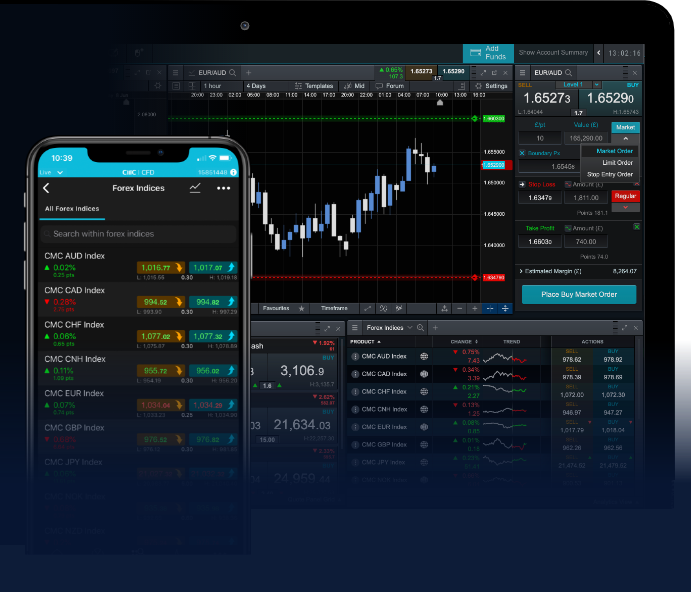
Forex Trading for Beginners: A Comprehensive Guide
Forex trading, also known as foreign exchange trading, is the process of exchanging one currency for another in the foreign exchange market. For many, it represents a new opportunity to earn money and achieve financial freedom. However, diving into the world of forex trading without proper knowledge can lead to losses and disappointment. In this guide specifically tailored for beginners, we’ll explore the fundamental concepts of forex trading, effective strategies, and essential tips to help you start your trading journey successfully. If you want more in-depth information, visit forex trading beginners https://trading-bd.com/.
Understanding the Basics of Forex Trading
The forex market is the largest and most liquid financial market in the world, with a daily trading volume exceeding $6 trillion. Unlike stock markets that have specific operating hours, the forex market operates 24 hours a day, five days a week, providing ample opportunity for traders to engage at their convenience.
Currency pairs are the foundation of forex trading. Every trade involves a pair, where one currency is exchanged for another. Currency pairs are categorized into three main types: major pairs (such as EUR/USD and GBP/USD), minor pairs (like AUD/NZD), and exotic pairs (such as USD/TRY).
Key Concepts for Beginners
1. Pips and Lots
A pip (percentage in point) is the smallest price change that a currency pair can make. For most pairs, a pip is typically the fourth decimal place. However, for pairs that involve the Japanese yen, a pip is the second decimal place. Understanding pips is crucial for calculating your gains or losses.
Lot size indicates the number of currency units you trade. There are three common types of lots: standard lots (100,000 units), mini lots (10,000 units), and micro lots (1,000 units). Choosing the right lot size is essential for managing risk effectively.
2. Leverage and Margin
Leverage allows traders to control a larger position with a smaller amount of capital. For example, if your broker offers a leverage ratio of 1:100, you can control $100,000 with just $1,000. While leverage can amplify profits, it also increases potential losses, making risk management vital in trading.
Margin is the amount of money required to open and maintain a leveraged position. It acts as a security deposit that brokers hold until the position is closed.
Developing Your Trading Strategy
A solid trading strategy helps you make informed decisions and manage risk effectively. Here are a few popular trading strategies suitable for beginners:
1. Day Trading
Day trading involves buying and selling currency pairs within the same trading day. Traders aim to capitalize on short-term market movements, often using technical indicators and chart patterns to make decisions. Day trading requires dedication, a well-defined strategy, and discipline to close positions by the end of the day.
2. Swing Trading
Swing trading focuses on capturing short to medium-term market movements. Traders hold positions for several days to weeks, relying on both technical and fundamental analysis to make decisions. This strategy allows for a more relaxed trading pace compared to day trading.
3. Position Trading

Position trading is a long-term strategy that involves holding positions for months or even years. Traders rely on fundamental analysis and economic indicators to inform their decisions. This strategy requires patience and a strong understanding of the overall market environment.
Risk Management in Forex Trading
Managing risk is crucial for long-term success in forex trading. Here are some risk management techniques that every beginner should consider:
1. Use Stop-Loss Orders
A stop-loss order allows you to set a predetermined price at which a losing position will be automatically closed. It helps limit losses and protect your trading capital.
2. Diversify Your Portfolio
Investing in multiple currency pairs can help spread risk. Avoid putting all your capital into one trade or currency pair, as this increases your exposure to market volatility.
3. Practice with a Demo Account
Before trading with real money, consider practicing with a demo account. Most brokers offer demo accounts where you can trade using virtual money. This allows you to become familiar with the trading platform, test your strategies, and build confidence before committing real funds.
Essential Tools and Resources
Having the right tools and resources at your disposal can significantly enhance your trading experience. Here are some essential tools for forex traders:
1. Trading Platform
A reliable trading platform is essential for executing trades and analyzing the market. Look for platforms that offer user-friendly interfaces, extensive charting capabilities, and access to various currency pairs.
2. Economic Calendar
An economic calendar provides information about upcoming economic events and reports that can impact the forex market. Keeping track of economic releases, such as employment data or interest rate decisions, can help you anticipate market movements.
3. Trading Community and Forums
Joining a community of traders can provide valuable insights and support. Engaging in forums, social media groups, or trading chat rooms can help you learn from others’ experiences and stay informed about market trends.
Conclusion
Forex trading offers exciting opportunities for those willing to learn and adapt. As a beginner, it’s crucial to understand the basics, develop a sound trading strategy, and prioritize risk management. Take the time to educate yourself, practice in a demo environment, and continuously improve your skills. With patience and dedication, you can navigate the forex market successfully and work towards achieving your financial goals.
